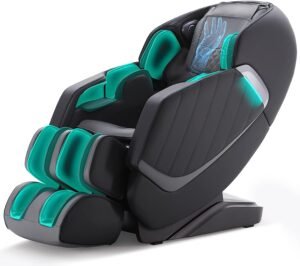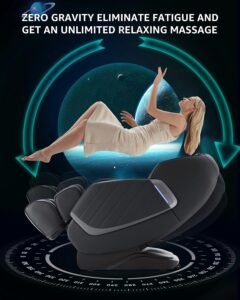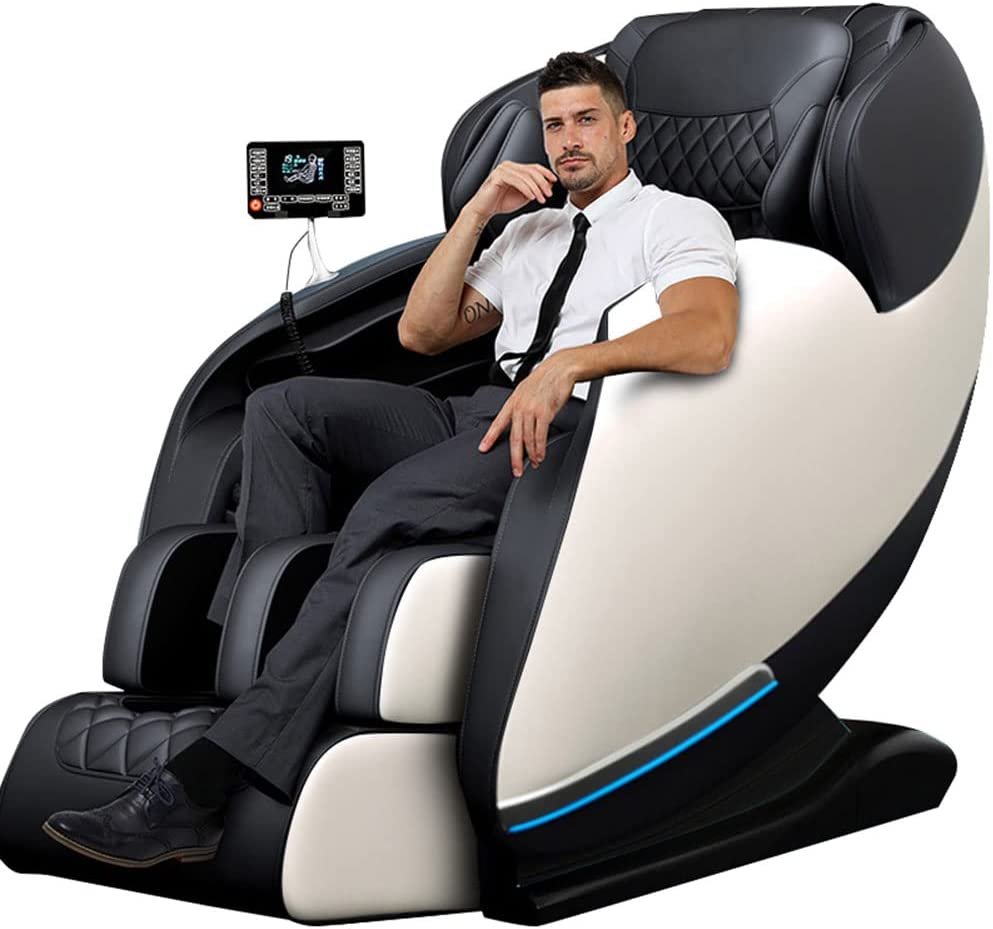Massage chairs have become popular as a simple method to relax and unwind in the modern world. However, as interest in these automated massage devices grows, concerns about their possible influence on back health have emerged. Are massage chairs truly safe, Can a Massage Chair Hurt Your Back or cause back pain?
In this article, we will look at massage chairs and their possible hazards, focusing on their effect on the back. You may enjoy the advantages of a massage chair without risking your back health if you recognize the potential dangers and take the appropriate safeguards.
From incorrect posture and intensity control to pre-existing back conditions, we explore factors contributing to discomfort or injury. Furthermore, we provide practical suggestions for safe use, emphasizing proper posture, regulating intensity levels, and checking with healthcare specialists as needed.
Learn how to maximise your massage chair while putting your back health first. Let’s get started!
Can a Massage Chair Hurt Your Back?
Table of Contents
Massage chairs are unlikely to cause back pain when used appropriately. Incorrect posture, excessive intensity, or underlying back issues, on the other hand, can all cause discomfort. Maintaining good alignment and changing the intensity levels to suit your needs is vital.
Understanding Massage Chairs

Massage chairs are becoming increasingly popular owing to their ease and capacity to relax and reduce stress in the comfort of your home. These highly advanced chairs are outfitted with various functions and settings that imitate various massage techniques, providing a customized experience according to your tastes.
Understanding massage chairs requires familiarizing oneself with their functions. These chairs frequently include a variety of massage techniques, such as kneading, rolling, tapping, and shiatsu. Each approach targets a different part of the body and offers distinct advantages.
Massage chairs also have adjustable settings to personalize your massage experience. You may adjust the intensity, pace, and focus regions to fit your needs. This adaptability allows you to target certain muscle groups or relieve tension in a specific location, giving a personalized massage session.
Furthermore, modern massage chairs have functions such as heat treatment, air compression, and zero-gravity posture. These features improve the massage experience by offering soothing warmth, mild pressure, and appropriate body posture for deeper relaxation.
By knowing the features and settings of massage chairs, you can make the most of your investment and have a tailored massage experience in the comfort of your home.
Potential Risks of Massage Chairs

While massage chairs provide various advantages, it is essential to be aware of the hazards involved with their use. Understanding these risks can help you take necessary precautions and ensure a safe and comfortable experience.
1. Improper Posture and Position
Maintaining good posture and positioning is essential when utilizing a massage chair. Improper alignment can cause back muscles to strain and cause discomfort or pain. Follow these measures to reduce this risk:
- Sit with your back against the backrest of the chair.
- Keep your feet level on the floor to equally distribute your weight.
- Use any pillows or cushions offered to support your neck, lumbar region, or any other specific areas of concern.
2. Control of Intensity and Pressure
Massage chairs have changeable intensity levels to accommodate your individual preferences. However, excessive pressure can cause discomfort or even exacerbate existing back issues. Follow the instructions below:
- Begin with a lower intensity level and gradually increase it as you become used to the massage.
- Pay attention to your body’s reaction and alter the intensity as needed.
- Reduce the intensity or switch to a softer massage style if you notice any pain or discomfort.
3. Pre-existing Back Conditions
Individuals with pre-existing back issues, such as herniated discs or spinal abnormalities, should use a massage chair cautiously. Consult with a healthcare professional beforehand to determine if a massage chair suits your condition.
You can ensure a safe and happy massage chair session by identifying and addressing these possible concerns. Taking proactive measures will help you reap the benefits of a massage while minimizing any potential negative effects.
Read: Can you get a massage while breastfeeding?
Tips for Safe Usage
To maximize the benefits of your massage chair while minimizing any potential risks, follow these tips for safe usage:
1. Optimal Positioning
Proper positioning is crucial to maintain a neutral spine alignment and prevent strain on your back. Follow these guidelines:
- Sit upright with your back against the chair’s backrest.
- Distribute your weight evenly and keep your feet flat on the floor.
- Align your head, neck, and spine in a straight line.
- Use any provided accessories, such as headrests or lumbar supports, to enhance your comfort and alignment.
Read: Best massage chair for lower back pain
2. Adjusting Intensity Levels
Customizing the intensity of your massage is key to a comfortable experience. Consider these recommendations:
- Start with a lower intensity setting and gradually increase it as desired.
- Listen to your body and adjust the intensity to a pleasant and therapeutic level.
- Experiment with different massage techniques and find the ones that suit your preferences and comfort level.
3. Consulting a Healthcare Professional
If you have any pre-existing back conditions or concerns, it’s essential to consult with a healthcare professional before using a massage chair. They can provide personalized advice and guidance based on your specific needs. Their expertise will help ensure a safe and beneficial experience.
Remember, the primary goal is to enjoy the benefits of your massage chair without compromising your back health. By implementing these tips, you can create a safe and personalized massage routine that promotes relaxation and wellness.
FAQs (Frequently Asked Questions):
1. How long should I use a massage chair?
The duration of using a massage chair varies from person to person. It’s best, to begin with shorter sessions, approximately 15-20 minutes, and gradually increase the duration as your body adjusts. Pay attention to your body and prevent extended workouts that may cause muscular tiredness or soreness.
2. Can a massage chair help relieve back pain?
Massage chairs are designed to alleviate muscle tension and promote relaxation, which can help with back pain relief. However, effectiveness may differ depending on the individual and the precise reason for the pain. Any persistent or severe back pain should be addressed with a healthcare expert for proper examination and treatment.
Read: Best Gloves for Massage Therapists
Conclusion
To summarize, while massage chairs are a simple method to rest and unwind, you should be aware of possible risks to your back health. You may enjoy the advantages of a massage chair while limiting discomfort or harm by keeping good posture, changing intensity settings, and considering any pre-existing back ailments.
Proper placement and gentle intensity changes are essential for a safe and enjoyable session. Additionally, consulting with a healthcare professional can provide personalized guidance and ensure that using a massage chair aligns with your needs.
By being proactive and attentive to these issues, you can establish a safe and comfortable massage routine that promotes relaxation, stress alleviation, and general well-being. For a refreshing experience, embrace the benefits of a massage chair while addressing your back health.

